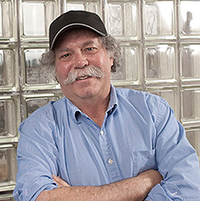12
Jan2017
National Laboratory
Condensed matter physicist Albert Migliori has been solving scientific mysteries for national security throughout his career. Migliori is a Los Alamos National Laboratory (LANL) fellow, the Director of the Seaborg Institute for Actinide Science, and a member of the Science Advisory Council at the National High Magnetic Field Laboratory. He is best known for leading development of a technique called resonant ultrasound spectroscopy (RUS), a powerful tool that uses acoustic tones to determine important measurements in condensed matter physics, including superconductivity.
13
Dec2016
Movements of waves, tides, and currents in the ocean carry kinetic energy that can be harnessed and converted to electricity. There is vast potential for using this ocean resource to provide clean, renewable energy to communities and cities in coastal areas, and it could impact the nearly half of the U.S. population that lives within 50 miles of the coastlines.
The U.S. Department of Energy (DOE) Water Power Program supports the design, development, testing, and demonstration of marine and hydrokinetic (MHK) technologies that can capture energy from waves, tides, and currents. This program also funds the creation of instrumentation, modeling, and simulation tools to enable real-condition testing of technologies. DOE recently announced $20 million in funding for projects that advance and monitor marine and hydrokinetic energy systems and will contribute to the development of a commercially viable MHK industry.
30
Nov2016
Besides having a passion for serving our country and its citizens through broad dissemination of Department of Energy R&D results, Office of Scientific and Technical Information (OSTI) employees are also committed to giving back to their local, national, and global communities in other ways.
Similar to many employer-supported charitable giving campaigns, there is an annual effort across the U.S. Federal Government known as the Combined Federal Campaign (CFC). OSTI has participated for many years, with a high percentage of employees donating each campaign season. The CFC was created in 1961 to coordinate the fundraising efforts of various charitable organizations, which must demonstrate standards of transparency and effectiveness in order to participate in the campaign. Federal employees continue to make the CFC the largest and most successful workplace philanthropic fundraiser in the world. The CFC is structured with 125 local campaigns that organize the annual fundraising effort. OSTI is part of the Smoky Mountain Region Combined Federal Campaign. In 2016, OSTI employees donated thousands of dollars to local, national, and international organizations.
08
Nov2016
perovskite crystal structure. Image Credit:
Oak Ridge National Laboratory
An exciting race is underway in the field of solar energy to develop a commercially viable material for solar cells to capture the sun’s rays and produce cheap, abundant solar energy for the planet. A class of materials called perovskites has recently emerged that researchers believe promises to be the winner in this solar energy race. According to scientists at Ames Laboratory, perovskites are, “optically active, semiconducting compounds that are known to display intriguing electronic, light-emitting and chemical properties,” with lead-halide perovskites now one of the most favorable semiconductors for solar cells because of their, “low cost, easier processability and high power conversion efficiencies.” Perovskite materials are now considered to be the future of solar cells and are playing a role in next-generation electric batteries, sensors, lasers, fuel cells, memory devices, spintronics, and other applications.
02
Nov2016
What would a modern software center look like?
We posed that question to Department of Energy (DOE) researchers across the complex in an effort to continue making our scientific and technical information (STI) tools and services best in class. The answers we received were both enthusiastic and enlightening: to be most useful, a modern DOE software platform must connect researchers in meaningful ways to their software, data, and research documents; embrace open source; not duplicate but complement existing community practices and platforms; provide for social coding; and enable social media that incorporates sharing and notification systems for software news and updates as well as links to author profiles.
We at the DOE Office of Scientific and Technical Information (OSTI) are happy to announce that this platform, called DOE Code, is now under planning and development.
Why is this important to DOE?
Software is a critical form of STI and instrumental to scientific research. It allows scientists to achieve day-to-day tasks, perform complex modeling and simulation, execute big data analytics, and control some of the largest scientific instruments in the world; in other words, software is essential to every aspect of modern scientific research.
Why is it important for OSTI to ensure a robust software platform?




